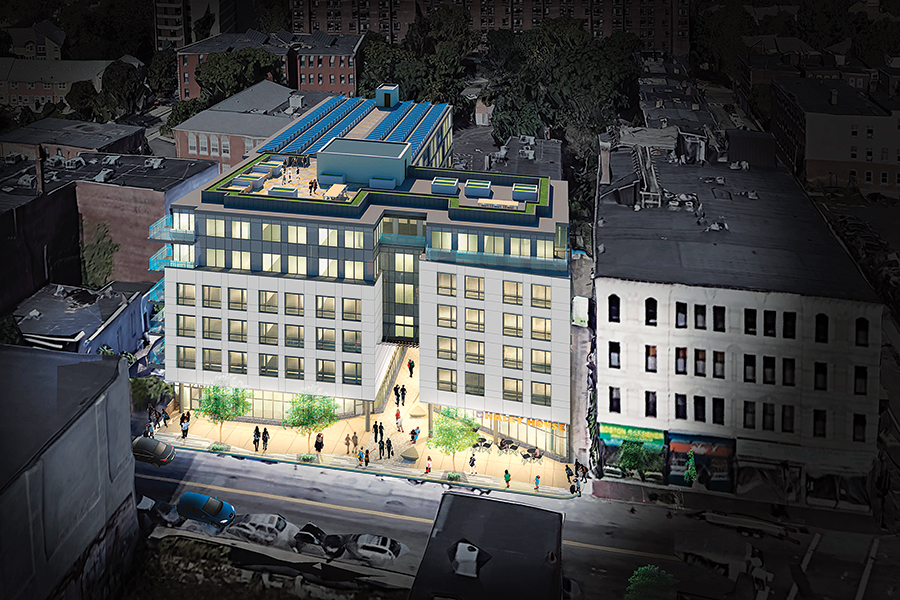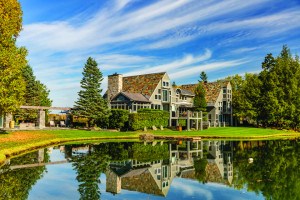Architect Greg Minott Wants to Make Boston’s Design Scene More Diverse
The Dream Collaborative cofounder and president-elect of the Boston Society for Architecture talks fostering diversity in local design.

In 2019, the Greater Boston Chamber of Commerce recognized Dream Collaborative for its diversity and inclusion efforts. / Courtesy photo
It seems that a career in design was always in the blueprints for Greg Minott, cofounder of the Back Bay–based firm Dream Collaborative. The son of a real estate broker and an engineer, he began studying architecture at 16 and soon landed his first gig—a bank renovation in his hometown of Mandeville, Jamaica. But that’s not to say his journey has been without its challenges: After finishing graduate school and moving to Boston for a job, he realized how whitewashed the field was—and how badly it needed diversification. “I was in a firm of 200 to 300 people, and there were just two of us that were minorities,” Minott says. “That was a typical experience, and I didn’t feel like I belonged in Boston.”
So after winning a design competition for the redevelopment of then-Dudley Square in 2008, he and his business partner Troy Depeiza decided to create the firm they wanted to see: one that mirrors the city’s intersectionality and engages all of its communities. Diversify the designers, he suggests, and we’re one step closer to a city that will work for all of us.
When you were creating Dream Collaborative, what was the vision for forming a different kind of architecture firm?
One of the things Troy and I wanted to do was create a more diverse firm than we’d seen previously. I grew up in a very diverse setting and I received such a rich education there, so from early on I saw the value in bringing different cultures together. Once I entered the architecture profession, though, I saw something different; firms weren’t very diverse and the leadership certainly wasn’t. Also, in Boston, which is quickly [growing as] a majority-minority city, I felt so strongly that to really understand and design for what the city would be like in the future, we needed to have a different engagement strategy for how we find out what the community needs and deliver that to them. The model of a client and master architect creating these plans in a vacuum and then putting them into the world felt outdated to me. There needed to be more of a community-based process around design. So that became the ethos of the company.
Why do you think Boston’s architectural scene is lacking in diversity?
For this city in particular, that [sense of unwelcomeness] is an issue that I’ve heard of time and time again. And there is such a limited pool in architecture to begin with. [According to the National Council of Architectural Registration Boards, less than one in five new architects identified as members of racial or ethnic minority groups in 2019.] So we have to be more intentional about looking at the life cycle of an architect in Boston, from seeing that initial interest starting in elementary school to ensuring that they can compete once they get to college. Firms are waking up to the reality that they have to be more inclusive of the different voices that are in their organizations, which is good. But it’s probably going to take a generation before we see a sizable shift because we’ve got to grow a new cohort of architects.

The firm’s forthcoming Roxbury development will include affordable-housing units and retail space. / Courtesy photo
Can you expand on why a diverse team is so valuable for an architecture firm?
Because we’re problem solvers: We’re being asked to do projects on sites with dynamics that are very unique to an area, and they require us to be intentional about how we engage communities to come up with solutions. It’s been shown that when you have teams with a mix of cultural norms and practices, they’re better at listening to and appreciating each other. When you don’t have that empowerment in a team, some of your best ideas can walk out the door because you’re not giving them room.
Your mission statement emphasizes the importance of contextual design. Can you tell us what that means, and how you implement it?
When we talk about contextual design, we’re really talking about the city as a living organism. There are people and neighborhoods that exist that we need to be connected to. It starts with good community engagement to figure out the scale of the architecture, what goes in the buildings, and the connections that should be made to existing neighborhoods. The entire process of permitting and building is smoother when folks can start to see themselves in the plans as they’re being developed, and see it as a place where they would like to live.
Urban renewal tends to have a bad reputation in Boston, given the historic razing of the West End in the 1950s. What’s a more representative definition of urban renewal, and how do you revitalize a neighborhood without also gentrifying it?
Urban renewal does have some history and negative connotations with the razing of whole neighborhoods, whether that be to put in a highway or some mega development that displaces residents. The new goal is development without displacement, and [the idea is that] instead of looking at it on a parcel-by-parcel basis, you’re looking at the entire neighborhood. And yes, for some neighborhoods you do need to have higher incomes or at least a mix of incomes to make future development sustainable and bring in new amenities. But it really is about trying to assemble equity and making sure all of these opportunities exist within the neighborhood. That way, folks at different points of their lives can participate in different ways, such as downsizing if you’re a senior or eventually enjoying the benefits of homeownership if you’re a renter. It’s about having all of these choices where you live.

Greg Minott spent a year studying computer science in college before switching to architecture. / Courtesy photo
You’re the 2021 president-elect of the Boston Society of Architecture. What are you hoping to achieve in that role?
When I ran for the office in 2019 there was no pandemic, there was no economic crisis, and George Floyd hadn’t happened yet. We’re dealing with multiple crises, so I have to find a way to support architects during this time. Whether it be making sure that they’re connected with jobs or contracting opportunities, being more involved as a connector of people and opportunities is going to be one of my priorities.
The other one is addressing the inequities in the architecture profession itself. We’re leading a race and architecture series [featuring a virtual event each month throughout the year] that is meant to educate, as well as cast a vision for what we want to see happen in the next 10 to 20 years so we can galvanize around that. My presidency is only a year so there’s only so much I can do, but laying out that bigger vision is part of what I’m trying to achieve for the racial diversity, equity, and inclusion aspects of the BSA.
Looking ahead 10 years from now, what’s changed in Boston’s architecture scene?
Ten years from now I’m expecting to see multiple times the number of firms that are minority-owned and -operated, and more with diverse leadership. I’m also pushing for a different priority in terms of what gets the front page of the architecture magazines in Boston, where we’re celebrating work that affects the everyday person and not just the folks that can afford a luxury office or condominium building. I’m looking forward to seeing that day when we start to change the narrative about how architecture serves the greater good.
And what does serving the greater good look like in Boston?
The greater good is about being intentional and knowing that we have a platform through architecture and through the built environment to recognize that folks should have equal opportunity and shouldn’t be treated differently based on their race or socioeconomic background. So externally, that means making sure that we’re bringing high-quality design to all neighborhoods. And we also make sure that for the folks doing the work, our team, there are equitable opportunities for minorities and women. It goes back to that notion that if the underrepresented among us are successful, then we’re all going to be more successful.


